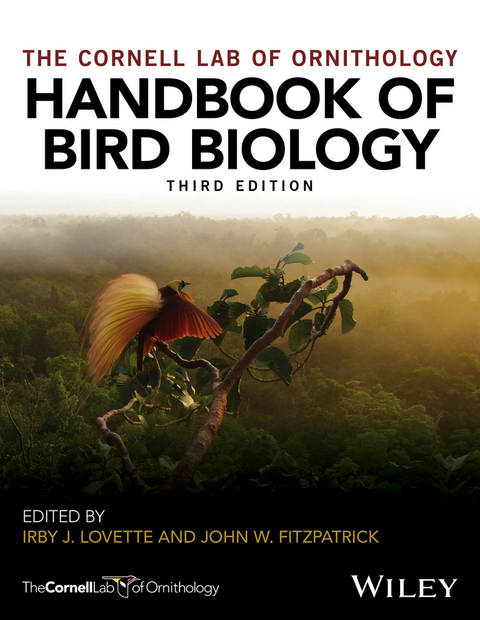Description
Efnisyfirlit
- Cover
- Title Page
- Editorial Team and Contributors
- Preface
- Bird Academy Web Resources
- Chapter 1: Why Study Birds?
- 1.1 Engaging with birds in the twenty‐first century
- 1.2 A short note on the names of birds
- 1.3 Birds and ornithology are both worldwide
- 1.4 Web resources beyond this handbook
- Chapter 2: Avian Diversity and Classification
- 2.1 Classifying avian diversity
- 2.2 Phylogenetics: the evolutionary tree of birds
- 2.3 Global patterns of avian diversity
- 2.4 Origin of birds
- References
- Chapter 3: How Birds Evolve
- 3.1 Natural selection
- 3.2 Sexual selection
- 3.3 Speciation
- 3.4 Hybridization
- 3.5 What drives the divergence of bird populations?
- 3.6 Adaptive radiations of birds
- References
- Chapter 4: Feathers and Plumages
- 4.1 Structural basics of feathers
- 4.2 Feather development
- 4.3 Evolution of feathers
- 4.4 Types of feathers: distribution, forms, and functions
- 4.5 Molts and plumages
- 4.6 Feather care
- 4.7 Coloration: form and function at the scale of light
- 4.8 Feather and plumage texture: light at the scale of barbules, barbs, and whole feathers
- 4.9 Visual functions of plumage
- References
- Chapter 5: Avian Flight
- 5.1 Aerodynamics
- 5.2 Power for flight
- 5.3 Maneuvering and stability
- References
- Chapter 6: Avian Anatomy
- 6.1 Skeletal system
- 6.2 Muscular system
- 6.3 Respiratory system
- 6.4 Digestive system
- 6.5 Urogenital system
- 6.6 Circulatory system
- 6.7 Nervous system
- 6.8 Sense organs and the sensory system
- References
- Chapter 7: Bird Physiology
- 7.1 Maintaining an internal balance
- 7.2 Not too hot or cold
- 7.3 Nutrition (digestion and metabolism)
- 7.4 Dealing with pathogens
- 7.5 Exercise physiology of flying birds
- 7.6 Avian endocrine system
- 7.7 Bird brains
- 7.8 Sensory physiology
- References
- Chapter 8: Avian Food and Foraging
- 8.1 Basics: meeting energy and nutritional demands
- 8.2 Optimizing what, when, where, and how to forage
- 8.3 Diversity of foods and foraging behaviors
- 8.4 Benefits and costs of social foraging
- 8.5 Feeding specialization and generalization
- References
- Chapter 9: Avian Mating and Social Behavior
- 9.1 Female mating preferences
- 9.2 Pair bonds, courtship, and divorce
- 9.3 Male mating preferences
- 9.4 Adaptive value of mate choice
- 9.5 Sexual selection and mating systems
- 9.6 Costs and benefits of social behavior
- References
- Chapter 10: Avian Vocal Behavior
- 10.1 Studying bird sounds: the investigator’s toolbox
- 10.2 Vocal repertoires
- 10.3 Vocal development
- 10.4 Production and control of song
- 10.5 Song variation in space and time
- 10.6 Functions of bird song
- 10.7 Signal values of differences among singers
- 10.8 Other remarkable features of singing behavior
- References
- Chapter 11: Breeding Biology of Birds
- 11.1 Timing of breeding
- 11.2 Breeding territories
- 11.3 Nests and nest building
- 11.4 Nest‐building behaviors
- 11.5 Eggs
- 11.6 Clutch size
- 11.7 Clutch and egg replacement
- 11.8 Incubation
- 11.9 Hatching
- 11.10 Altricial and precocial young
- 11.11 Recognition among parents and their young
- 11.12 Parental care
- 11.13 Survival and reproductive trade‐offs
- References
- Chapter 12: Avian Migration and Dispersal
- 12.1 Types of movements
- 12.2 Patterns in migration
- 12.3 How birds time their migrations
- 12.4 Orientation and navigation
- 12.5 Migration physiology
- 12.6 Dispersal
- 12.7 Evolution of avian movement patterns
- References
- Chapter 13: Ecology of Bird Populations
- 13.1 Avian population ecology
- 13.2 Changes in populations over time and space
- 13.3 Censusing bird populations
- 13.4 Avian demography
- 13.5 Life history evolution
- 13.6 Ecological niches
- 13.7 Limiting factors for bird populations
- 13.8 Population regulation
- 13.9 Populations through time and space
- References
- Chapter 14: Bird Communities
- 14.1 Classifying bird species assemblages
- 14.2 Ways of describing communities
- 14.3 Patterns of species diversity
- 14.4 The niche: a fundamental unit in community ecology
- 14.5 Interspecific competition
- 14.6 Evidence for interspecific competition
- 14.7 Interspecific commensalism
- 14.8 Mutualisms
- 14.9 Parasitism
- 14.10 Predation
- 14.11 Food chains and food webs
- 14.12 Communities within birds
- 14.13 Top‐down effects, trophic cascades, and ecological services
- References
- Chapter 15: Bird Conservation
- 15.1 History of bird conservation
- 15.2 Conservation biology
- 15.3 Recent avian extinctions
- 15.4 Causes of avian population declines
- 15.5 Major threats to bird populations
- 15.6 Avian population increases
- 15.7 Conservation solutions
- 15.8 Value of wild birds
- 15.9 What each of us can do
- References
- Glossary
- Index
- End User License Agreement






Reviews
There are no reviews yet.